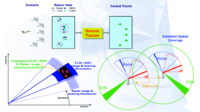
Photo from wikipedia
ABSTRACT Accurate and up-to-date built-up area mapping is of great importance to the science community, decision-makers, and society. Therefore, satellite-based, built-up area (BUA) extraction at medium resolution with supervised classification… Click to show full abstract
ABSTRACT Accurate and up-to-date built-up area mapping is of great importance to the science community, decision-makers, and society. Therefore, satellite-based, built-up area (BUA) extraction at medium resolution with supervised classification has been widely carried out. However, the spectral confusion between BUA and bare land (BL) is the primary hindering factor for accurate BUA mapping over large regions. Here we propose a new methodology for the efficient BUA extraction using multi-sensor data under Google Earth Engine cloud computing platform. The proposed method mainly employs intra-annual satellite imagery for water and vegetation masks, and a random-forest machine learning classifier combined with auxiliary data to discriminate between BUA and BL. First, a vegetation mask and water mask are generated using NDVI (normalized differenced vegetation index) max in vegetation growth periods and the annual water-occurrence frequency. Second, to accurately extract BUA from unmasked pixels, consisting of BUA and BL, random-forest-based classification is conducted using multi-sensor features, including temperature, night-time light, backscattering, topography, optical spectra, and NDVI time-series metrics. This approach is applied in Zhejiang Province, China, and an overall accuracy of 92.5% is obtained, which is 3.4% higher than classification with spectral data only. For large-scale BUA mapping, it is feasible to enhance the performance of BUA mapping with multi-temporal and multi-sensor data, which takes full advantage of datasets available in Google Earth Engine.
Journal Title: International Journal of Remote Sensing
Year Published: 2020
Link to full text (if available)
Share on Social Media: Sign Up to like & get
recommendations!